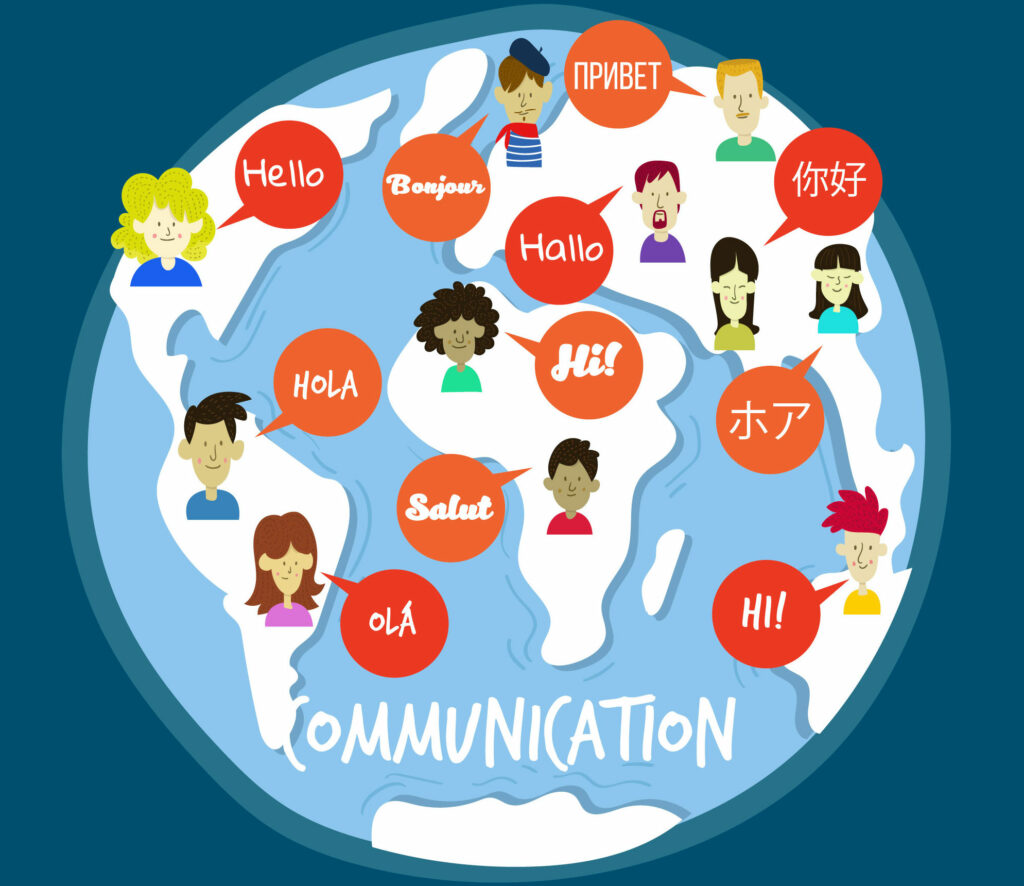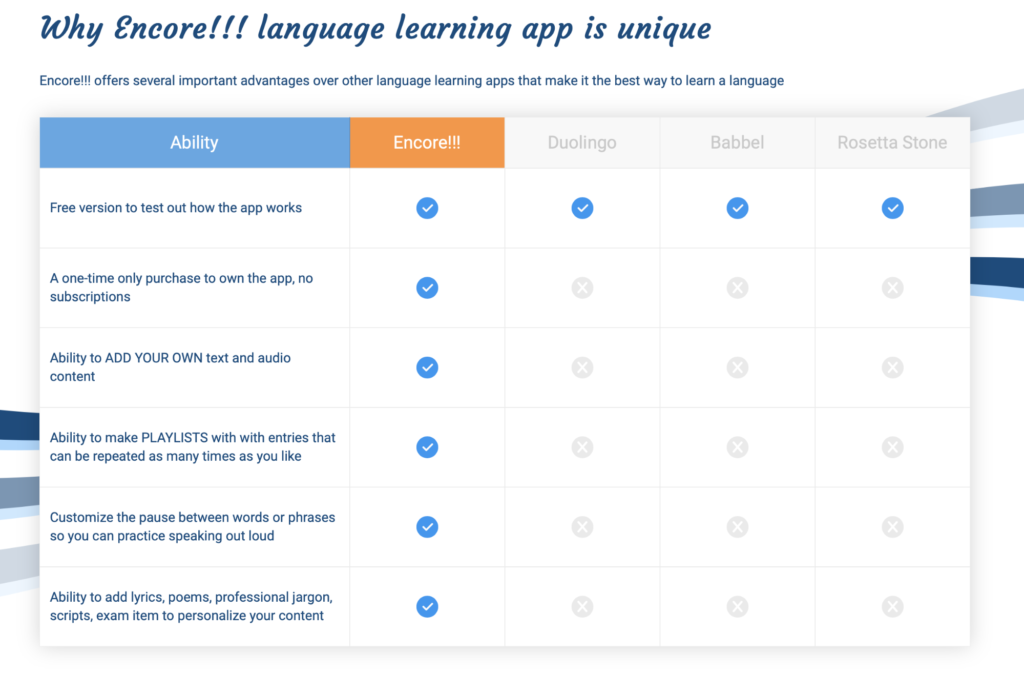Best Techniques For Learning a Foreign Language
In 2023, the world is increasingly a global community. 13.5% (just under 43 million) of Americans speak Spanish as their first language. And, 16% (just under 53 million) of Americans speak a dialect of Chinese. Finally, with the transition of the traditional workplace to one where employees can work remotely, and clients can be across the world, foreign language learning is becoming an increasingly top priority for professionals living in the United States. In this article, we’ve selected the best techniques for learning foreign languages, leaving it up to you to pick which one you prefer.

Why Is Learning A Foreign Language Important?
There is demonstrable evidence that people have infinite capacity for learning language, especially if the student starts young. Foreign language knowledge also impacts other areas of your life – such as academic achievement at the college level, provides increased employment opportunities, and can prevent age-related cognitive disorders and losses.
According to the US Foreign Service Institute:
- It takes 600-750 class hours (or, 36 weeks) of learning to obtain basic fluency in foreign languages classified in Categories I and II (languages more like English, such as Spanish, French, Italian, German, Dutch, etc.)
- It takes 1,100 class hours (44 weeks) of foreign language learning to obtain basic fluency in Category III languages (languages with alternative alphabets, or significant cultural differences from English, like Russian, Vietnamese, Finnish, Farsi, etc.)
- And, it takes a staggering 2,200 hours (88 weeks) for native English speakers to learn basic fluency in a Category IV (languages that are very difficult for native English speakers to grasp, such as Arabic, Japanese, Chinese, and Korean)

Who has 750 hours, let alone 2,200 hours, to spend sitting in a class? The answer is no one – except maybe high school/college students or Foreign Service professionals.
But, given the population shift in the US demographic, and the new ecosphere of global work practices, it is essential to speak multiple languages. Regardless of if you’re learning at age 6 or at age 46.
What is The Best Way to Learn a Foreign Language?
There is a lot of debate in the linguistics field on the best technique to learn new languages. Most approaches combine foreign language methods, but there are 5 agreed upon standard language learning styles:
- Rote Memorization of vocabulary through memorization techniques. This style of learning new language skills consists mainly of repetition and memorization tricks that then lead a student to be able to cobble together basic fluency.
- Immersion learning. This technique can be used in multiple ways. The most common method is to visit a country for an extended period of time and learn your desired language naturally through being forced to learn to communicate with your community. Conversely, a student can also perform immersion language learning by using a foreign language app in the “foreign” setting, where they are receiving lessons only in the language of their choice. (Incidentally, this is the most common classroom technique of teaching in an elementary or high school setting.)
- Peer-to-Peer language learning. This is a newer trend for learning new language communication skills, especially for adult language learning. P2P technique means employing a native speaker to explore your community with you and have conversations about what you are seeing and doing. This is similar to immersion learning, but it does involve some basic memorization techniques before you are at a starting point to begin working with your individual teacher.
- Casual learning. In 2023, this technique is super popular amongst educators and students alike. Educators like to use casual learning to reinforce classroom studying. And, adult students like to use casual learning to learn the basics of and memorize language and see if they enjoy speaking it before engaging in more advanced skills training. So what is casual languages learning? Simple: It is using an app (like Encore!!!) to familiarize yourself with basic vocabulary, phrases, and context of a language – encouraging you to have foreign language awareness in your native surroundings, then use what you have learned to communicate.
- Transcription method. The transcription method is considered by many to be the best way to learn a foreign language. This belief is backed up by a number of studies by researchers looking for the best language learning techniques. Essentially, this method for learning a new language consists of listening to a recording while you type out a transcript of what you hear, read it back, and then repeat. Being an active form of learning, it helps with those who may have trouble staying focused on more passive forms of foreign language learning techniques.

Regardless of what techniques or methods you use to learn or teach a foreign language, it is essential that you keep it fun! In recent years, the typical teaching you might have experienced in high school (rote memorization of vocabulary, grammatical conjugation of vocabulary, lecturing by a second language speaker) has been retired (or, at least there has been a big shift away from these methods.) Ultimately, the best technique for learning a language is the one that works best for you.
What Works When Learning a Foreign Language?
According to Mashable, some of the most important methods how to memorize vocabulary in a foreign language are pretty simple:
- Keeping your learning light and fun is essential. With the amount of information you have to input into your brain on a daily basis, if you try to stuff rote memorization into your brain in your spare time, you will not have great retention or comprehension. Among the novel ideas on how to memorize words in a foreign language – reading graphic novels or listening to music in your desired language, dating a person who speaks the languages you are learning, playing video games or using apps that only are available in your desired language are very popular. (Encore!!! language learning app allows you to make custom playlists of words and songs translated into your targeted language) – are very popular.
- Use spaced repetition to increase retention. The best foreign language apps all employ one common feature. Spaced repetition is a scientific and evidence based learning technique that involves repeating new, and more difficult languages more frequently, and diminishing early learned/basic language repetition in scale to how quickly the more difficult words and phrases are learned.
This technique is proven to increase a student’s rate of learning. With an app like Encore!!! you can customize the number of repetitions of words or phrases you are being served, the amount of time that elapses between repetitions, and the speed of the voice narrating the repetition to further refine your spaced repetition learning to suit your current ability, advancement through lessons, and ability to retain/availability of attention you have in that moment.
Sometimes you will need more repetitions to cement a word or phrase, likewise there will be language components that you pick up easily. The flexibility that Encore!!! provides you a strategic advantage over many products which are considered the best app to learn foreign language with.

- Don’t be afraid to make mistakes. Think of the people you know or have known that have come to your country speaking only their mother tongue and have been forced to learn quickly, and in a foreign environment. They make mistakes all over the place, yet are not afraid to continue to try to comprehend and speak your language. Partly, because they have to. Mostly, because there is nothing to be worried or ashamed of when you misuse or misunderstand a foreign word or phrase in conversation. Think of how empathetic you are and how you help to correct that person’s pronunciation or grammar. We promise you that others will extend you the same empathy. Plus, it will give you a solidified learning experience which will reinforce your fluency.
- Study in short, intense bursts. According to Mark Mason, spreading out your formal study practice into shorter bursts, over the course of many days, leads to a slower retention. Whereas, studying intensely for multiple hours only one or two days per week will help you retain what you are learning in a more efficient way. As he says, “Language requires a lot of repetition, a lot of reference experiences, and a consistent commitment and investment. It’s better to allot a particular period of your life, even if it’s only 1-2 weeks, and really go at it 100%, than to half-ass it over the course of months or even years.”
In addition, it is important to know when you are at your most awake and alert, otherwise your formal study will be wasted.
- Write it down and learn in your sleep. While you might not learn via sleeping on a textbook, there is some evidence that writing what you have learned down and listening to yourself repeat your lessons via audio recording can significantly increase your memory retention. This also pertains to listening to lessons when you are not able to directly concentrate on what you are learning – like during workouts, performing work tasks, or while you are commuting. What is important here is that you listen to lessons you have previously learned and repeated in your own voice via audio recording. Writing down text and listening to it on repeat is one of the key memorization tricks that public speakers like actors, politicians, and tour guides use to learn dialogue quickly. These methods can be applied as memory techniques for language learning, too.
- Set And Achieve Goals. It doesn’t matter if you are keeping track of diet, exercise, household chores, or learning a new language; setting goals is one of the best methods for staying motivated. Goal setting will work with all language study techniques. The most important thing to remember is to set both short and long term goals, so you are always achieving some form of progress. The feeling of making progress and hitting all the smaller ones on the way to the big goal will have you feeling a sense of accomplishment. Remember to reward yourself for each goal you reach too!
- Practice With A Partner. All of the best techniques for learning a new language will include immersion. Immersion doesn’t need to only happen when you are in a classroom or using an app though. Finding other people who are learning your target language, or native speakers who are looking to trade for conversation and learn from you, is a great method for how to study a foreign language in an immersive way. Using conversation practice along with apps and/or classes is the fastest way to learn a foreign language because it increases your hours of practice.
Conclusion
Whether you want to learn Spanish, French, or Japanese, the basic techniques of language learning are the same. What is different in 2023 is the accessibility potential students have to use multiple techniques for learning a new language at the same time. While there are a lot of different apps that employ one (or, maybe two) of these language learning techniques, the best app to learn a foreign language will layer these concepts and provide you the foundation to start having in-person conversations with people who are native or extremely fluent speakers of the language you are trying to learn. The Encore!!! app is considered best-in-class, as it allows you to spend less time interacting with the app (tapping buttons, scrolling, etc.) with an increased intense time learning language. It also allows you to create playlists, use 39 prepared lessons per language, and create a customized immersion experience, digitally.
FAQ about the Best Techniques For Learning a Foreign Language
What is the fastest way to memorize a foreign language vocabulary?
The best language learning techniques to help you memorize a vocabulary fast is by using methods that keep you engaged and that help you repeat the words till you remember them. One method is to make your own flash cards, and then use them often to memorize. The act of making the cards helps you remember the words and their meanings along with the regular use after.
What are some methods for studying language?
The best language learning methods include rote memorization, immersion training, peer-to-peer learning, and casual learning. These can be combined by using apps like Encore!! which has the ability to offer all of these methods. Foriegn language learning strategies should always use some combination of these methods for maximum progress.
What are the 5 language skills?
The five language skills are reading, listening, speaking, writing, and cultural awareness. These skills all develop at different paces depending on how you learn and the techniques to learn a language that you use.
Which is the most important factor in learning a language?
The most important factor in learning a language is disputed by many, but comes down to one of two answers. Most will agree that the best technique to learn a language is one that is fun and engaging, as if it doesn’t keep your interest you are more likely to stop. The other factor is exposure, because you learn more the more you are exposed to the language.
How can I memorize faster?
Some tips to learning a new language faster and memorizing vocabulary would start with repetition being key. Practice your vocabulary in short and intense bursts, making sure to repeat and use tools like flashcards or apps like Encore!! Write down the words, repeat them, and use the app all in combination to ensure the best results.

